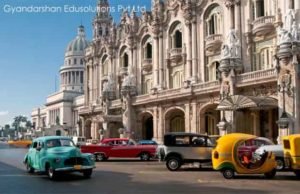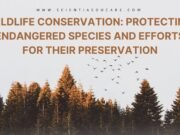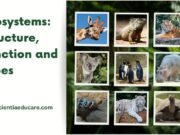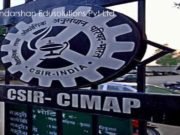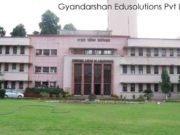Global Career and Job Opportunities
All
- All
- Abnormal Psychology
- Advanced Grammar Concepts
- Advanced Grammar Topics
- Age of Exploration European History
- Agricultural Universities in India
- AI and Career Opportunities
- AI and Ethics
- AI in Business and Economy
- AI in Competitive Exams
- AI in Daily Life
- AI in Defense and Security
- AI in Education
- AI in Entertainment and Media
- AI in Healthcare and Medicine
- AI in Law and Governance
- AI in Science and Technology
- Ancient Europe
- Ancient History
- Animal Physiology
- Applied Economics
- Applied Life Sciences
- Art, Culture and Philosophy European History
- Basic Economics Concepts
- Basics of English Grammar
- Beauty
- Behavioral Psychology
- Biochemistry
- Biological Psychology
- Biology Basics and Fundamentals
- Biology Topics with MCQs
- Biophysics and Structural Biology
- Biotechnology
- Botany
- Career Article
- CBSE Schools in Assam
- CBSE Schools in India
- CBSE Syllabus
- Cell Biology
- Central Universities in India
- Clinical Psychology
- Cognitive Psychology
- Colonialism and Its Impact European History
- Creative Grammar Topics
- Cultural History
- Cultural Psychology
- Culture
- Culture and Society
- Development Economics
- Developmental Biology
- Developmental Biology and Embryology
- Developmental Psychology
- Dining
- Ecology
- Ecology and Environmental Biology
- Economic History
- Economic Systems
- Economics and Finance
- Economics Topics Exams oriented
- Economics Topics with MCQs
- Education
- Educational Blogs
- Educational Institutions in Assam
- Educational Institutions in India
- Educational Institutions Worldwide
- Educational Psychology
- Endocrinology
- English Grammar
- English Language and Literature
- Environment and Ecology
- Environmental Biology
- Error Identification and Correction
- Essay Writing
- European Economy
- European History
- European History Key Personalities
- European Political History
- European Social Movements
- Evolutionary Biology
- Exam-Focused Practice Topics
- Examinations in India
- Experimental Psychology
- Fashion
- Featured
- Fitness
- Forensic Psychology
- Future Prospects of AI
- Gadgets
- General European History
- General Overview of AI
- Genetics
- Genetics and Evolution
- Global Career and Job Opportunities
- Grammar for Academic Excellence
- Grammar for Competitive Exams
- Grammar for Spoken English
- Health
- Health and Fitness
- Health Psychology
- Historical and Contemporary Economics
- History and Civics
Top Hard Skills for 2025: Future-Proof Your Career Today
As we navigate through 2025 and beyond, the global job market is undergoing significant transformations driven by rapid technological advancements and evolving industry demands....
Tourism Worldwide
All
- All
- Abnormal Psychology
- Advanced Grammar Concepts
- Advanced Grammar Topics
- Age of Exploration European History
- Agricultural Universities in India
- AI and Career Opportunities
- AI and Ethics
- AI in Business and Economy
- AI in Competitive Exams
- AI in Daily Life
- AI in Defense and Security
- AI in Education
- AI in Entertainment and Media
- AI in Healthcare and Medicine
- AI in Law and Governance
- AI in Science and Technology
- Ancient Europe
- Ancient History
- Animal Physiology
- Applied Economics
- Applied Life Sciences
- Art, Culture and Philosophy European History
- Basic Economics Concepts
- Basics of English Grammar
- Beauty
- Behavioral Psychology
- Biochemistry
- Biological Psychology
- Biology Basics and Fundamentals
- Biology Topics with MCQs
- Biophysics and Structural Biology
- Biotechnology
- Botany
- Career Article
- CBSE Schools in Assam
- CBSE Schools in India
- CBSE Syllabus
- Cell Biology
- Central Universities in India
- Clinical Psychology
- Cognitive Psychology
- Colonialism and Its Impact European History
- Creative Grammar Topics
- Cultural History
- Cultural Psychology
- Culture
- Culture and Society
- Development Economics
- Developmental Biology
- Developmental Biology and Embryology
- Developmental Psychology
- Dining
- Ecology
- Ecology and Environmental Biology
- Economic History
- Economic Systems
- Economics and Finance
- Economics Topics Exams oriented
- Economics Topics with MCQs
- Education
- Educational Blogs
- Educational Institutions in Assam
- Educational Institutions in India
- Educational Institutions Worldwide
- Educational Psychology
- Endocrinology
- English Grammar
- English Language and Literature
- Environment and Ecology
- Environmental Biology
- Error Identification and Correction
- Essay Writing
- European Economy
- European History
- European History Key Personalities
- European Political History
- European Social Movements
- Evolutionary Biology
- Exam-Focused Practice Topics
- Examinations in India
- Experimental Psychology
- Fashion
- Featured
- Fitness
- Forensic Psychology
- Future Prospects of AI
- Gadgets
- General European History
- General Overview of AI
- Genetics
- Genetics and Evolution
- Global Career and Job Opportunities
- Grammar for Academic Excellence
- Grammar for Competitive Exams
- Grammar for Spoken English
- Health
- Health and Fitness
- Health Psychology
- Historical and Contemporary Economics
- History and Civics
Tourism in India
All
- All
- Abnormal Psychology
- Advanced Grammar Concepts
- Advanced Grammar Topics
- Age of Exploration European History
- Agricultural Universities in India
- AI and Career Opportunities
- AI and Ethics
- AI in Business and Economy
- AI in Competitive Exams
- AI in Daily Life
- AI in Defense and Security
- AI in Education
- AI in Entertainment and Media
- AI in Healthcare and Medicine
- AI in Law and Governance
- AI in Science and Technology
- Ancient Europe
- Ancient History
- Animal Physiology
- Applied Economics
- Applied Life Sciences
- Art, Culture and Philosophy European History
- Basic Economics Concepts
- Basics of English Grammar
- Beauty
- Behavioral Psychology
- Biochemistry
- Biological Psychology
- Biology Basics and Fundamentals
- Biology Topics with MCQs
- Biophysics and Structural Biology
- Biotechnology
- Botany
- Career Article
- CBSE Schools in Assam
- CBSE Schools in India
- CBSE Syllabus
- Cell Biology
- Central Universities in India
- Clinical Psychology
- Cognitive Psychology
- Colonialism and Its Impact European History
- Creative Grammar Topics
- Cultural History
- Cultural Psychology
- Culture
- Culture and Society
- Development Economics
- Developmental Biology
- Developmental Biology and Embryology
- Developmental Psychology
- Dining
- Ecology
- Ecology and Environmental Biology
- Economic History
- Economic Systems
- Economics and Finance
- Economics Topics Exams oriented
- Economics Topics with MCQs
- Education
- Educational Blogs
- Educational Institutions in Assam
- Educational Institutions in India
- Educational Institutions Worldwide
- Educational Psychology
- Endocrinology
- English Grammar
- English Language and Literature
- Environment and Ecology
- Environmental Biology
- Error Identification and Correction
- Essay Writing
- European Economy
- European History
- European History Key Personalities
- European Political History
- European Social Movements
- Evolutionary Biology
- Exam-Focused Practice Topics
- Examinations in India
- Experimental Psychology
- Fashion
- Featured
- Fitness
- Forensic Psychology
- Future Prospects of AI
- Gadgets
- General European History
- General Overview of AI
- Genetics
- Genetics and Evolution
- Global Career and Job Opportunities
- Grammar for Academic Excellence
- Grammar for Competitive Exams
- Grammar for Spoken English
- Health
- Health and Fitness
- Health Psychology
- Historical and Contemporary Economics
- History and Civics
Sun Temple, Konark: A Majestic Marvel of Ancient Indian Architecture
Sun Temple, Konark: A Majestic Marvel of Ancient Indian Architecture
Introduction
The Sun Temple of Konark, an architectural masterpiece, stands as a testimony to India’s rich...
Fatehpur Sikri, Agra: A Timeless Mughal Marvel for Travelers
Fatehpur Sikri, Agra: A Timeless Mughal Marvel for Travelers
Introduction
Fatehpur Sikri, a UNESCO World Heritage Site near Agra, stands as a magnificent example of Mughal...
Agricultural Universities in India
All
- All
- Abnormal Psychology
- Advanced Grammar Concepts
- Advanced Grammar Topics
- Age of Exploration European History
- Agricultural Universities in India
- AI and Career Opportunities
- AI and Ethics
- AI in Business and Economy
- AI in Competitive Exams
- AI in Daily Life
- AI in Defense and Security
- AI in Education
- AI in Entertainment and Media
- AI in Healthcare and Medicine
- AI in Law and Governance
- AI in Science and Technology
- Ancient Europe
- Ancient History
- Animal Physiology
- Applied Economics
- Applied Life Sciences
- Art, Culture and Philosophy European History
- Basic Economics Concepts
- Basics of English Grammar
- Beauty
- Behavioral Psychology
- Biochemistry
- Biological Psychology
- Biology Basics and Fundamentals
- Biology Topics with MCQs
- Biophysics and Structural Biology
- Biotechnology
- Botany
- Career Article
- CBSE Schools in Assam
- CBSE Schools in India
- CBSE Syllabus
- Cell Biology
- Central Universities in India
- Clinical Psychology
- Cognitive Psychology
- Colonialism and Its Impact European History
- Creative Grammar Topics
- Cultural History
- Cultural Psychology
- Culture
- Culture and Society
- Development Economics
- Developmental Biology
- Developmental Biology and Embryology
- Developmental Psychology
- Dining
- Ecology
- Ecology and Environmental Biology
- Economic History
- Economic Systems
- Economics and Finance
- Economics Topics Exams oriented
- Economics Topics with MCQs
- Education
- Educational Blogs
- Educational Institutions in Assam
- Educational Institutions in India
- Educational Institutions Worldwide
- Educational Psychology
- Endocrinology
- English Grammar
- English Language and Literature
- Environment and Ecology
- Environmental Biology
- Error Identification and Correction
- Essay Writing
- European Economy
- European History
- European History Key Personalities
- European Political History
- European Social Movements
- Evolutionary Biology
- Exam-Focused Practice Topics
- Examinations in India
- Experimental Psychology
- Fashion
- Featured
- Fitness
- Forensic Psychology
- Future Prospects of AI
- Gadgets
- General European History
- General Overview of AI
- Genetics
- Genetics and Evolution
- Global Career and Job Opportunities
- Grammar for Academic Excellence
- Grammar for Competitive Exams
- Grammar for Spoken English
- Health
- Health and Fitness
- Health Psychology
- Historical and Contemporary Economics
- History and Civics
Chandra Shekhar Azad University of Agriculture & Technology, Uttar Pradesh: A Comprehensive Guide
Chandra Shekhar Azad University of Agriculture & Technology, Uttar Pradesh: A Comprehensive Guide
Introduction
Chandra Shekhar Azad University of Agriculture & Technology (CSAUA&T) is one of...
Nanaji Deshmukh Veterinary Science University: A Premier Institution for Veterinary and Animal Sciences in...
Nanaji Deshmukh Veterinary Science University: A Premier Institution for Veterinary and Animal Sciences in Madhya Pradesh
Introduction
Nanaji Deshmukh Veterinary Science University (NDVSU), located in Jabalpur,...
Anand Agricultural University, Gujarat: A Hub of Agricultural Excellence
Anand Agricultural University, Gujarat: A Hub of Agricultural Excellence
Introduction
Anand Agricultural University (AAU) is one of India's premier institutions dedicated to agricultural education, research, and...
Central Agricultural University, Manipur: A Hub for Agricultural Excellence
Central Agricultural University, Manipur: A Hub for Agricultural Excellence
Introduction
Central Agricultural University (CAU), Manipur, is a prestigious institution dedicated to advancing agricultural education, research, and...
Manyavar Shri Kanshiram Ji University of Agriculture and Technology
Manyavar Shri Kanshiram Ji University of Agriculture and Technology
Website: http://www.mskjuat.edu.in/
Email: vc.mskjuat@gmail.com Banda - 210001,
Uttar Pradesh 05192-221605
Fax:02426-243302
About Manyavar Shri Kanshiram Ji University of Agriculture and Technology
Manyawar...
Ecology and Environmental Biology
All
- All
- Abnormal Psychology
- Advanced Grammar Concepts
- Advanced Grammar Topics
- Age of Exploration European History
- Agricultural Universities in India
- AI and Career Opportunities
- AI and Ethics
- AI in Business and Economy
- AI in Competitive Exams
- AI in Daily Life
- AI in Defense and Security
- AI in Education
- AI in Entertainment and Media
- AI in Healthcare and Medicine
- AI in Law and Governance
- AI in Science and Technology
- Ancient Europe
- Ancient History
- Animal Physiology
- Applied Economics
- Applied Life Sciences
- Art, Culture and Philosophy European History
- Basic Economics Concepts
- Basics of English Grammar
- Beauty
- Behavioral Psychology
- Biochemistry
- Biological Psychology
- Biology Basics and Fundamentals
- Biology Topics with MCQs
- Biophysics and Structural Biology
- Biotechnology
- Botany
- Career Article
- CBSE Schools in Assam
- CBSE Schools in India
- CBSE Syllabus
- Cell Biology
- Central Universities in India
- Clinical Psychology
- Cognitive Psychology
- Colonialism and Its Impact European History
- Creative Grammar Topics
- Cultural History
- Cultural Psychology
- Culture
- Culture and Society
- Development Economics
- Developmental Biology
- Developmental Biology and Embryology
- Developmental Psychology
- Dining
- Ecology
- Ecology and Environmental Biology
- Economic History
- Economic Systems
- Economics and Finance
- Economics Topics Exams oriented
- Economics Topics with MCQs
- Education
- Educational Blogs
- Educational Institutions in Assam
- Educational Institutions in India
- Educational Institutions Worldwide
- Educational Psychology
- Endocrinology
- English Grammar
- English Language and Literature
- Environment and Ecology
- Environmental Biology
- Error Identification and Correction
- Essay Writing
- European Economy
- European History
- European History Key Personalities
- European Political History
- European Social Movements
- Evolutionary Biology
- Exam-Focused Practice Topics
- Examinations in India
- Experimental Psychology
- Fashion
- Featured
- Fitness
- Forensic Psychology
- Future Prospects of AI
- Gadgets
- General European History
- General Overview of AI
- Genetics
- Genetics and Evolution
- Global Career and Job Opportunities
- Grammar for Academic Excellence
- Grammar for Competitive Exams
- Grammar for Spoken English
- Health
- Health and Fitness
- Health Psychology
- Historical and Contemporary Economics
- History and Civics
Wildlife Conservation: Endangered Species and Protection Efforts
Wildlife Conservation: Protecting Endangered Species and Efforts for Their Preservation
Introduction:
Wildlife conservation is crucial to maintaining the balance of ecosystems and protecting biodiversity. Endangered species,...
Ecosystems: Structure, Function and Types
Ecosystems: Structure, Function and Types – Understanding the Core of Ecological Balance
Introduction
An ecosystem refers to a biological community of interacting organisms and their physical...
Biogeochemical Cycles: Carbon, Nitrogen and Water Cycles
Understanding Biogeochemical Cycles: A Deep Dive into the Carbon, Nitrogen, and Water Cycles in Ecosystems
Biogeochemical cycles refer to the continuous movement and recycling of...
Conservation Biology: Principles and Practices
Conservation Biology: Principles and Practices for a Sustainable Future
Introduction
Conservation biology is a multidisciplinary field that focuses on the preservation and management of biodiversity. As...
Community Ecology: Interactions and Succession
Community Ecology: Understanding Interactions and Succession in Complex Ecosystems
Community ecology is the study of the interactions between species within a community and the influence...
Research laboratories in India
All
- All
- Abnormal Psychology
- Advanced Grammar Concepts
- Advanced Grammar Topics
- Age of Exploration European History
- Agricultural Universities in India
- AI and Career Opportunities
- AI and Ethics
- AI in Business and Economy
- AI in Competitive Exams
- AI in Daily Life
- AI in Defense and Security
- AI in Education
- AI in Entertainment and Media
- AI in Healthcare and Medicine
- AI in Law and Governance
- AI in Science and Technology
- Ancient Europe
- Ancient History
- Animal Physiology
- Applied Economics
- Applied Life Sciences
- Art, Culture and Philosophy European History
- Basic Economics Concepts
- Basics of English Grammar
- Beauty
- Behavioral Psychology
- Biochemistry
- Biological Psychology
- Biology Basics and Fundamentals
- Biology Topics with MCQs
- Biophysics and Structural Biology
- Biotechnology
- Botany
- Career Article
- CBSE Schools in Assam
- CBSE Schools in India
- CBSE Syllabus
- Cell Biology
- Central Universities in India
- Clinical Psychology
- Cognitive Psychology
- Colonialism and Its Impact European History
- Creative Grammar Topics
- Cultural History
- Cultural Psychology
- Culture
- Culture and Society
- Development Economics
- Developmental Biology
- Developmental Biology and Embryology
- Developmental Psychology
- Dining
- Ecology
- Ecology and Environmental Biology
- Economic History
- Economic Systems
- Economics and Finance
- Economics Topics Exams oriented
- Economics Topics with MCQs
- Education
- Educational Blogs
- Educational Institutions in Assam
- Educational Institutions in India
- Educational Institutions Worldwide
- Educational Psychology
- Endocrinology
- English Grammar
- English Language and Literature
- Environment and Ecology
- Environmental Biology
- Error Identification and Correction
- Essay Writing
- European Economy
- European History
- European History Key Personalities
- European Political History
- European Social Movements
- Evolutionary Biology
- Exam-Focused Practice Topics
- Examinations in India
- Experimental Psychology
- Fashion
- Featured
- Fitness
- Forensic Psychology
- Future Prospects of AI
- Gadgets
- General European History
- General Overview of AI
- Genetics
- Genetics and Evolution
- Global Career and Job Opportunities
- Grammar for Academic Excellence
- Grammar for Competitive Exams
- Grammar for Spoken English
- Health
- Health and Fitness
- Health Psychology
- Historical and Contemporary Economics
- History and Civics
Institute of Minerals and Materials Technology Bhubaneswar
IMMT - Institute of Minerals and Materials Technology Bhubaneswar
Institute of Minerals and Materials Technology is an advanced research institute in the field of mineralogy...
Central Institute of Medicinal and Aromatic Plants Lucknow
CIMAP - Central Institute of Medicinal and Aromatic Plants Lucknow
Central Institute of Medicinal and Aromatic Plants is a research institute of Council of Scientific...
NPL – National Physical Laboratory New Delhi
NPL - National Physical Laboratory New Delhi
One of the most ancient texts of India, Manusmriti, describes among the duties of the king: The king...
NGRI – National Geophysical Research Institute Hyderabad
NGRI - National Geophysical Research Institute Hyderabad
National Geophysical Research Institute (NGRI), a constituent research laboratory of the Council of Scientific and Industrial Research (CSIR)...
IICT – Indian Institute of Chemical Technology Hyderabad
IICT - Indian Institute of Chemical Technology Hyderabad
The CSIR-Indian Institute of Chemical Technology (CSIR-IICT) is one of the oldest National Laboratories under the Council...











